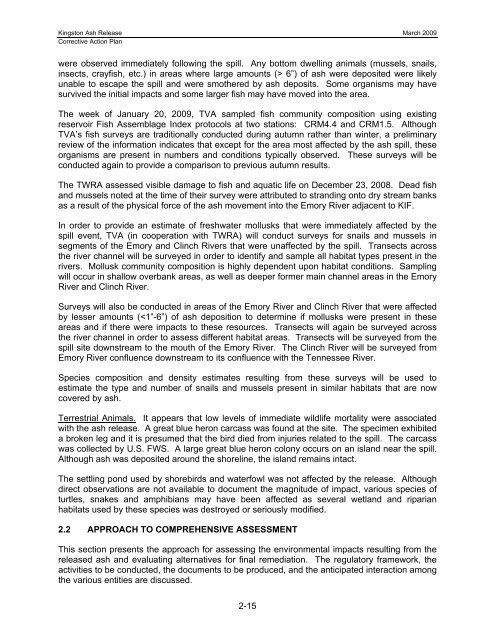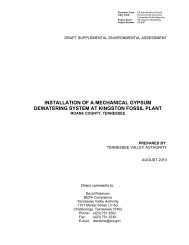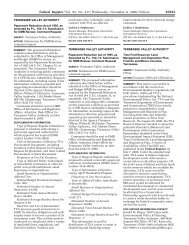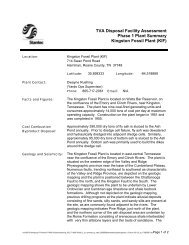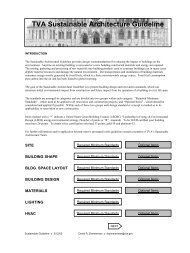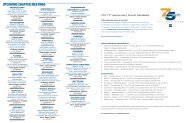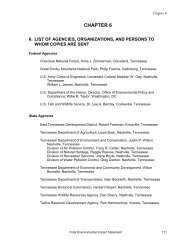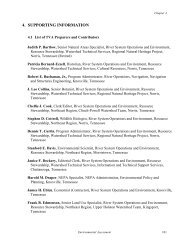Corrective Action Plan - Tennessee Valley Authority
Corrective Action Plan - Tennessee Valley Authority
Corrective Action Plan - Tennessee Valley Authority
Create successful ePaper yourself
Turn your PDF publications into a flip-book with our unique Google optimized e-Paper software.
Kingston Ash Release March 2009<br />
<strong>Corrective</strong> <strong>Action</strong> <strong>Plan</strong><br />
were observed immediately following the spill. Any bottom dwelling animals (mussels, snails,<br />
insects, crayfish, etc.) in areas where large amounts (> 6”) of ash were deposited were likely<br />
unable to escape the spill and were smothered by ash deposits. Some organisms may have<br />
survived the initial impacts and some larger fish may have moved into the area.<br />
The week of January 20, 2009, TVA sampled fish community composition using existing<br />
reservoir Fish Assemblage Index protocols at two stations: CRM4.4 and CRM1.5. Although<br />
TVA’s fish surveys are traditionally conducted during autumn rather than winter, a preliminary<br />
review of the information indicates that except for the area most affected by the ash spill, these<br />
organisms are present in numbers and conditions typically observed. These surveys will be<br />
conducted again to provide a comparison to previous autumn results.<br />
The TWRA assessed visible damage to fish and aquatic life on December 23, 2008. Dead fish<br />
and mussels noted at the time of their survey were attributed to stranding onto dry stream banks<br />
as a result of the physical force of the ash movement into the Emory River adjacent to KIF.<br />
In order to provide an estimate of freshwater mollusks that were immediately affected by the<br />
spill event, TVA (in cooperation with TWRA) will conduct surveys for snails and mussels in<br />
segments of the Emory and Clinch Rivers that were unaffected by the spill. Transects across<br />
the river channel will be surveyed in order to identify and sample all habitat types present in the<br />
rivers. Mollusk community composition is highly dependent upon habitat conditions. Sampling<br />
will occur in shallow overbank areas, as well as deeper former main channel areas in the Emory<br />
River and Clinch River.<br />
Surveys will also be conducted in areas of the Emory River and Clinch River that were affected<br />
by lesser amounts (


